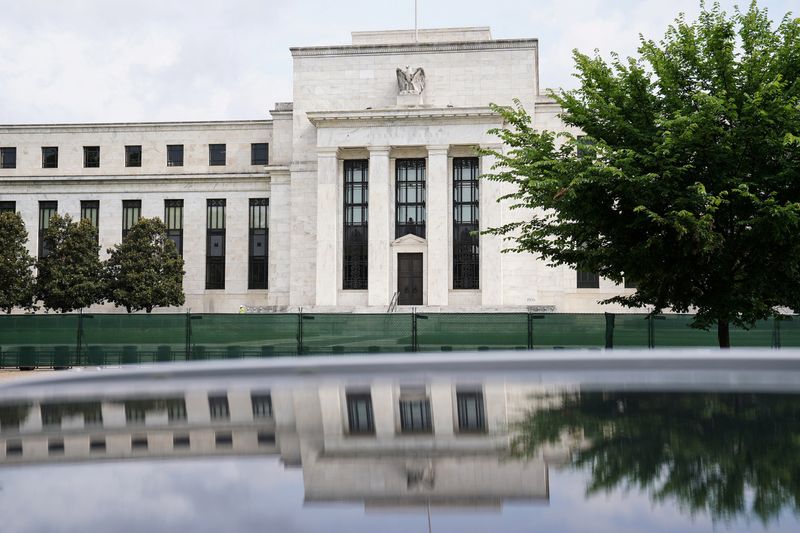Tesla gains as Musk buys $1 billion in stock; closes well-off highs
Investing.com -- Uncertainty over the impact of tariffs proposed by the Trump administration is starting to show up in economic data, leading to several downside surprises, putting the Fed between a rock and hard place as the central bank has to balance disinflationary impact from policy uncertain with the prospect of actual tariffs ramping up inflation.
"The FOMC may have to balance the disinflationary effect of a policy uncertainty spike, with the prospect of actual inflation from prospective tariffs later," Macquarie strategists said in a note.
The strategists said that recent worries surrounding US growth can easily translate to worries about global growth, pointing to the poorer retail sales report for January, a large drop in the services PMI to 49.7 (from 52.9), and the decline in the University of Michigan consumer sentiment indexes.
They also noted the Dallas Fed’s Texas manufacturing survey headline index dropped from 14.1 in January to -8.3 in February, with respondents in the survey flagging the uncertainty caused by the threat of US import tariffs as a key concern.
Trump’s perceived tactic of using tariffs as a negotiating tool has been effective in prompting targeted nations into favorable deals, but history shows that the policy uncertainty hurts aggregate demand, or economic growth.
"[S]everal studies of the U.S. economy associate policy uncertainty with diminished aggregate demand," the strategists said.
This link between "tariffs, policy uncertainty, and output (through aggregate demand) turns the relationship between tariffs and inflation upside-down, insofar as it suggests that because tariff headlines promote uncertainty, tariff headlines may have a disinflationary effect," they added.
Data on Tuesday pointed to further evidence of the impact of policy uncertain as U.S. consumer confidence suffered the biggest slump since August 2021.
Despite the potential disinflationary effect from tariff uncertainty, for now the Fed is "likelier to continue to focus on the prospect that tariffs and the broader policy agenda of the US administration (including tariffs, immigration restrictions, and lower tax rates) can cause inflation," they said.
But should disinflation precede a U.S. economic slowdown "with corroborating evidence from a slowdown in hiring or business investment, the Fed’s tone can shift in a ’dovish’ direction," they added.
